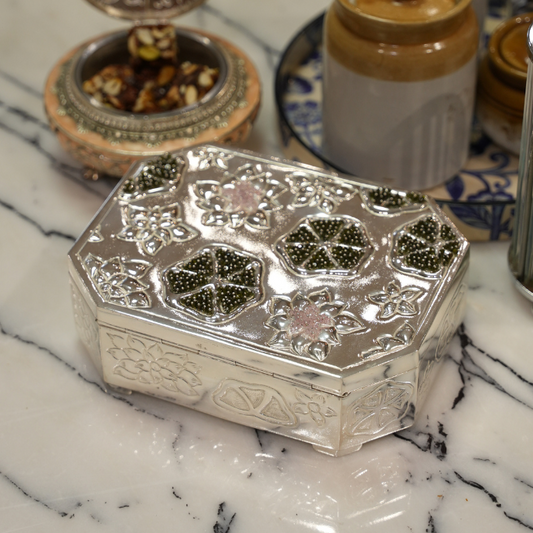The Complete Guide to Silver Metals: Uses, Properties, and Production
Silver metals have played a crucial role in human civilization for centuries. This versatile and valuable metal has unique properties that make it indispensable in various industries and applications. In this guide, we will explore the many facets of silver, from its chemical properties to its wide-ranging uses and production methods.
Understanding Silver as a Metal
Is Silver a Metal?
Silver is indeed a metal, specifically a chemical element with the symbol Ag and atomic number 47. It belongs to the group of transition metals and is characterized by its high conductivity, malleability, and lustrous appearance.
Silver Metals
When compared to other metals, silver stands out due to its exceptional electrical and thermal conductivity. It is also more malleable and ductile than many other metals, allowing it to be shaped and stretched into thin wires or sheets. Additionally, silver’s high reflectivity makes it an ideal material for mirrors and other reflective surfaces.
The Composition and Properties of Silver metal
Physical Properties
- Conductivity: Silver is renowned for its superior electrical and thermal conductivity, outperforming all other metals in these areas.
- Malleability and Ductility: Silver can be easily shaped and molded, making it perfect for crafting intricate designs in jewelry and silverware.
- Reflectivity and Luster: Silver’s bright, white luster and high reflectivity make it ideal for decorative items and reflective surfaces.
Chemical Properties
- Reactivity with Other Elements: Silver is relatively inert and does not react easily with most elements, which contributes to its corrosion resistance.
- Corrosion Resistance: Silver resists oxidation and tarnishing, though it can react with sulfur compounds to form a tarnish layer.
How Silver is Made
Mining and Extraction
Silver is primarily obtained from mining. The main sources of silver ore include argentite, galena, and native silver. These ores are extracted through various mining processes such as open-pit mining, underground mining, and placer mining.
Refining and Purification
Once the ore is extracted, silver is refined and purified. Common methods include:
- Smelting: The ore is heated to separate silver from other metals.
- Electrolytic Refining: This process uses electrolysis to produce high-purity silver.
- Chemical Leaching: Chemicals are used to dissolve silver from the ore, leaving impurities behind.
Uses of Silver Metals in Various Industries
Electronics
Silver is widely used in electronics due to its excellent conductivity. The uses of silver include its application in electrical contacts, switches, and conductors, ensuring reliable performance in modern gadgets and appliances.
Jewelry and Silverware
Silver has been a popular choice for jewelry and silverware for centuries. Its malleability allows for intricate designs, and its luster adds elegance to any piece.
Medicine
Silver’s antimicrobial properties make it invaluable in medical applications. It is used in wound dressings, medical devices, and dental alloys, helping to prevent infections and promote healing.
Photography
Silver halides are crucial in traditional photographic films and papers. Although digital photography has largely replaced film, silver-based photography remains important in certain artistic and scientific applications.
Renewable Energy
Silver plays a vital role in solar panels and photovoltaic cells. It helps convert sunlight into electricity, supporting renewable energy initiatives and reducing reliance on fossil fuels.
Broader Uses of Metal and Silver's Role
Uses of Metal in General
Metals are essential in construction, manufacturing, transportation, and infrastructure. They provide strength, durability, and versatility in various applications.
Silver's Unique Contributions
Silver’s unique properties give it specific advantages over other metals. For instance, its high conductivity makes it superior for electrical applications, while its antimicrobial properties are unmatched in medical uses.
Future Trends and Innovations in Silver Metals
Emerging Technologies
Nano-silver is an exciting area of research, with potential applications in medicine, textiles, and environmental purification. Innovations in silver-based technologies continue to push the boundaries of what this metal can achieve.
Sustainability and Recycling
The environmental impact of silver mining is a concern, but efforts are being made to promote sustainable mining practices and increase recycling rates. Silver’s high recyclability makes it an eco-friendly choice for various applications.
Conclusion
Silver’s versatility and unique properties have made it an indispensable metal throughout history and into the modern era. From electronics to medicine, and renewable energy to jewelry, silver’s contributions are vast and varied. As we continue to explore its potential, silver will undoubtedly remain a valuable and essential material in numerous fields.
FAQs
What are the primary uses of silver metal?
Silver is used in various industries such as electronics, jewelry, medicine, photography, and renewable energy.
How is silver made from its ore?
Silver is extracted from its ores through mining, followed by refining and purification processes to obtain pure silver metal.
Why is silver considered an essential metal in electronics?
Silver has the highest electrical conductivity of all metals, making it crucial for electrical contacts, switches, and conductors in electronics.
What makes silver unique compared to other metals?
Silver’s unique properties include high reflectivity, excellent conductivity, antimicrobial qualities, and malleability, setting it apart from other metals.
Is silver a metal, and what are its properties?
Yes, silver is a metal. It is known for its high electrical and thermal conductivity, lustrous appearance, and malleability.
What are the environmental impacts of silver mining and usage?
Silver mining can have environmental impacts such as habitat destruction and pollution. However, efforts are being made to improve sustainable mining and recycling practices.
How is silver used in renewable energy technologies?
Silver is used in photovoltaic cells for solar panels, playing a significant role in converting sunlight into electricity and promoting sustainable energy solutions.







